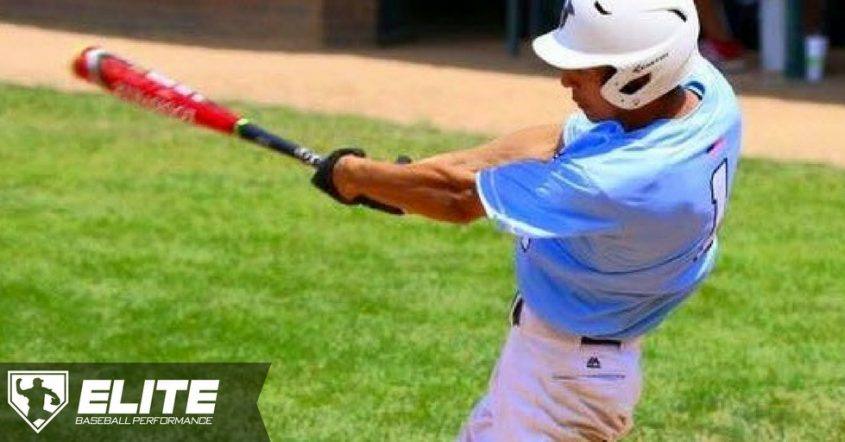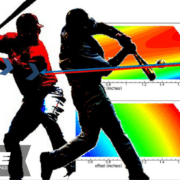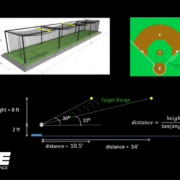Should you swing at the first pitch?
Should you swing at the first pitch? Is being “ready to pounce” on the first pitch a quality hitting approach? Let’s talk about it.
Swinging at the first pitch, affectionately known within baseball as “ambushing,” is controversial. Some coaches will tell you that you need to be patient, and see a bunch of pitches. Others strongly encourage their hitter to be ready pounce. The idea for this article came to mind when reading an intelligent tweet in response to a chart about batting averages on first pitch strikes:
Ken Spangenber replied to this graphic with the following: “You realize that stat is only if they actually swing at the first pitch right? Any of these guys could’ve only swung at 5% of 1st pitches.”
What Does This Photo Tells Us?
Kudos to Ken, as his comment was right on track. This photo simply tells us that good hitters (the guys above are All-Stars, and the worst average shown was Catcher Salvador Perez, whose position is widely accepted as defense-first) are good at choosing to swing at pitches they can hit hard, with Mike Trout being unreal at it. This is going to lead me to my conclusion for the question, Should A Person Swing at The First Pitch…
Only If You’re Extra Sure It’s Your Pitch
I’ve pitched since I was 8 years old, including the last 7 years in pro baseball. The resounding commonality between good hitters – at any level – is that they’re better at selecting pitches that give them a higher probability of hitting hard. Pick only the fastballs down the middle and leave everything else.
And that appears to be exactly what Mike Trout does, right? To hit .632 in 0-0 counts is absurd, and really all he’s doing is narrowing his focus so much that the only pitches exist to him are pitches in the exact location he wants. When he gets them, he smashes them. When they’re not there, he takes them. That’s simple, but it’s not easy to do.
Most hitters think it’s their pitch, then realize it’s off-speed or not in the location they initially thought. Or, they get into an ambush mentality and get too aggressive, making poor decisions on what to swing at because they’re excited to hopefully get a hit in a certain count or situation. I’m not a hitter, but I know this because I’ve watched it and exploited it personally for many years.
But I used the word EXTRA SURE because if you ground out on pitch #1 too many times… Clayton Kershaw will be pitching into the 9th inning (and no one wants that).
Guess What? There is No Magical Count
Your bat doesn’t know it’s a 2-2 count. The baseball doesn’t know it’s 0-2. The count you choose to hit the ball in makes absolutely zero difference as to the outcome. The only difference maker is the hitter – how well can he barrel up the pitch he chooses to swing at? A line drive in an 0-0 count flies just the same as a line drive on a 3-2 count.
There’s no magic and no advantage to putting bat to ball in a certain count…unless you’re a pitcher.
Swing First Pitch. Please and Thank You.
Here’s the thing, though. You hitters suck. Even the best of you only get a hit 3/10 times and most of you, only 1 in 4.
So, as a pitcher, the odds are good for me when you swing at the first pitch. I’ll even entice you by throwing a bunch of fastballs early in the game. If you swing at the first pitch, I get a one-pitch out 3 out of 10 times, and now my innings are nice and easy.
And even if you get a hit, chances are it’s not a bomb, and I’ve still only thrown one pitch. 4 pitches later, I’ve gotten a ground-ball double play and have two outs on five pitches. I’ll still pitch deep into this game.
What really hurts pitchers is 3-2 walks, 3-2 hits, 2-2 bloopers. Those cost us much more dearly, as we wasted 5-7% of our available energy (assuming 100 pitches) and got zero outs to show for it. If I’m a reliever and want to be fresh for tomorrow, I want to be back in the dugout in less than 15 pitches.
Pitchers Miss Their Spots
But here’s the thing: pitchers miss their spots even when grooving fastballs. Even Big League pitchers don’t hit their spots as much as you think they do. So when you get super hell-bent on ambushing the first pitch, even if he tries to groove a first pitch fastball, it may end up on the outer third, and now you’ve grounded out to short. If he throws an off-speed pitch for a strike, you’re definitely on your front foot if you even make contact. And like I just said, if you’re going to swing at a bad pitch, it’s better to swing at bad pitch #6 than #1.
Rules To Swing By
Based on all of this, I’ve come up with 4 rules that I coach my athletes.
#1: (Almost) Never Swing at An Off-Speed Pitch First Pitch.
If you’re sitting on one…ask yourself why? Are you even that good at hitting breaking balls when you know they’re coming? If it’s down in the zone you’re still probably rolling over. If you’re sitting on a slider that shows up much less frequently…you’ll let fastballs (literally) pass you by.
And if you’re looking fastball and decide to swing at a first-pitch slider, you’re probably not going to barrel it up well. In the Majors, more 0-0 off-speed stuff is thrown, because hitters are so good. But at lower levels, first-pitch breaking balls freeze and eat guys up. When hitters swing at them, the result is usually a weakly-batted ball.
#2. Never Pre-Choose A Specific Count To Swing
Your goal as a hitter should always be to select the pitch that you can barrel up with authority. The best hitters I faced in pro baseball were always exceptionally picky – they knew the strike zone and knew what their limits were; if they couldn’t hit my fastball on the inner third or closer, they’d choose a looking strikeout rather than a deviation from their plan.
So, if you’re getting yourself excited to “jump on the first pitch,” without having any idea what that pitch will be until it’s on it’s way, you’re setting yourself up for a poor decision; you’re making your mind partly up without any clue if the pitch is in your comfort zone.
I yelled at my 16U Warbird Senators team last year when they started getting excited about a pitcher who was throwing a lot of first-pitch fastballs.
He’s throwing first pitch fastballs! Start swinging first pitch, guys! Let’s get him!
What happened? The kid went through two consecutive innings on like 13 pitches. It was embarrassing, as he had quick innings and forced our pitcher back into the 96 degree heat after what seemed like a 30-second break in the dugout.
Sure, he was throwing first-pitch fastballs. But, this pitcher also barely had a second pitch to speak of, so he was throwing first-pitch fastballs, second-pitch fastballs, all the way down to 7th-pitch fastballs. Most 16U pitchers don’t have much else. We just helped him until I set us straight and reminded guys to swing if they could drive it and that there was nothing special about getting a first-pitch hit.
#3. X-Out Pitches That You Don’t Want.
Make a list for yourself by asking, “What pitches do I hit really well?” If it’s not on that list, then it’s definitely not for you on an 0-0 count, and you need to X it off your list; you don’t even consider swinging at it on 0-0. Offspeed in general is probably on this list.
#4. Remember: Picking a Bad Pitch Early is Exactly What the Pitcher Wants
Pitchers talk scouting reports on the opposing team, and every pitcher is different in his approach to pitching. The topic of “Who Ambushes?” is prevalent – we don’t want to get burned on 0-0 counts if we can help it.
But really, it’s about knowing who swings 0-0 more often than not. For those guys, I don’t get nervous about throwing a fastball. Rather, I get excited – I know that if he sees fastball, he’s likely to swing. So, I just focus a little harder on making an 0-2 quality fastball on 0-0; if he swings at my outer-corner fastball on 0-0, he’s out. If I jam one under his fists…he’s out. If I elevate well…he pops up. All I have to do is not toss it down the middle. And, even if I do…he’ll probably still just fly out.
And, in my experience, though flipping in a breaking ball to an ambusher is a good idea, it often results in a freeze – he expects fastball (he’s trying to smash it) and freezes on any spinning pitch. So, it’s either 0-1 or 1-0, rather than that 1-pitch ground out I’d much prefer. I WANT those ambushing idiots to swing (Mike Trout excluded).
A Story to End On
I pitched in relief against the same team twice within a week, and struck the same 4-hole hitter out twice on the exact same pitch – a fastball that was a ball-and-a-half inside. Clearly a ball both times, and nearly the exact same pitch. It was good for me, but he definitely got screwed each time.
I’m not usually very social, but both teams went out to the bars after a game, as it was the birthday of one of the players. I saw the guy, and I half-jokingly apologized for my strikeouts; I told him that both of them were balls. I’d take it, but he definitely got screwed. He laughed and replied:
Man, I’m not even worried about it. I’m never going to swing at that pitch – I’ll strike out looking 10 out of 10 times on that pitch because I can’t do anything with it. I’m trying to drive balls, not ground one through the hole. So don’t worry about that, I wasn’t swinging anyway, even if it was on the black. You just got me.
I liked that conversation. He was a veteran guy and knew what he could barrel up, and what he couldn’t. I was trying to make the pitch I made – I wanted to jam him (he had a lot of power if he extended his arms. So as soon as I got ahead in the count, I was living under his fists. If he swung, he’d get jammed. If he didn’t, then we’d see.
Are You An Ambusher?
Let me know if you think we should swing at the first pitch in the comments below!
Dan Blewett
Latest posts by Dan Blewett (see all)
- What Causes A Mental Meltdown in Baseball? - September 3, 2019
- Two Common Curveball Mistakes Pitchers Should Avoid - July 30, 2019
- Is Heavy Lifting Good For Pitchers? - July 2, 2019











Good thoughts, but would like to see the same question asked to a hitting coach that was not a pitcher and get the other perspective.
Agree! Anyone interested in submitting???
I agree and an disagree with few statements. Coaching elite travel baseball, and high level high school baseball, I like to er on the side of BE AGGRESSIVE! I just dont understand the logistics of falling down 0-1 against a good/quality pitcher. Statistics say you hit better 0-0 and 1-0 then a 0-1 count. Doesnt hitting become easier if I know WHAT TYPE of pitch is coming?
If the count is 3-0 guess what pitch is coming. If the count is 2-0 guess what pitch is coming? It’s not a damn change up. The more youth pitchers fall behind in the count the more they stress and press.
Be aggressive hit fastballs, especially in fastball predetermined counts. 3-0 Barry Bonds is getting a fastball, so why the hell you think 14 year old Johnny gonna get anything different?
The overall point was that the first pitch isn’t special and we shouldn’t be extra aggressive in swinging at first pitches that may not be good pitches to hit.
Being aggressive is a terrible thing when the goal on the first pitch when it may not be a good quality pitch to hit. When hitters have too much of an ambush, attack mindset, they end up swinging on 0-0 at a pitch they can’t drive, giving the pitcher an easy 1-pitch out.
It’s better to fall behind 0-1 on a pitch you can’t drive then to swing at a pitcher’s pitch just to avoid being 0-1.
If pitcher doesn’t throw first pitch strike, what is MLB batting avg, on 1-0 counts? Well over .300. I think of Ted Williams hitting zones, if first pitch was in sweet spot, I swung with good success. Agree, Would like to hear from hitting coach vs pitcher
Please email me at [email protected] if anyone wants to continue this hitting approach discussion. Very good topic for sure. I dont believe their is a right or wrong answer!
I was taught that if you can burn 7 or more pitches off the starter’s pitch count, its still a quality at-bat that is helping the team. The more looks you get at a pitcher’s throws, the more the team learns up and down the whole order.
But on the other side of the coin, you still need some swings on the first pitch to keep the pitcher honest and not just give up a free strike 1 every at-bat.
But never let the pitcher know you are taking a pitch. You have to look like you plan to swing at the first pitch. Every pitch, actually. Even 3-0.